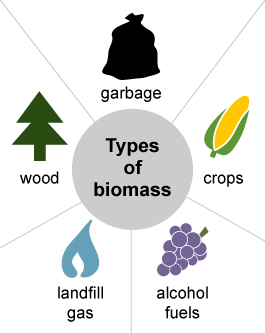Scientists have Succeeded in Harnessing Solar Power for clean Hydrogen production from Biomass!

"Earth provides enough to satisfy every man's need, but not every man's greed." - Gandhi
Recycling waste products is one of the biggest challenges in the world today. These waste products are being used for energy production in certain parts of the world, but fossil fuels are the main source of energy which has led to serious energy crisis and environmental problems, i.e. pollutant emission and fossil fuel depletion. The natural resources exist in abundance, and using them for energy is becoming more effective for both government and businesses.
Meet Biomass
Biomass is one of the richest renewable resources, formed by fixing carbon dioxide in the atmosphere during the process of Photosynthesis which is why biomass is considered carbon neutral in its life cycle. It has been used for centuries. Currently, it contributes to about only 12% of world’s energy supply and in some countries it contributes to about 40-50% in energy supply.

Wood based Biomass
Extracting Energy from Biomass
Biomass research has recently received a lot of attention because of its waste-to-energy application, but one of the major disadvantages is the low efficiency of utilizing biomass. Biomass is commonly used for heating and cooking through biomass burning in china. Alternatively, converting biomass into aqueous and gaseous fuels, electricity and especially hydrogen is possibly a more efficient way of utilization.
Recently, Researchers and scientists at the University of Cambridge have been successful in developing a way to produce hydrogen gas using Solar Power and biomass.
Dr. David Wakerly of the Department of Chemistry at the University of Cambridge says-
There’s a lot of chemical energy stored in raw biomass, but it’s unrefined, so you can’t expect it to work in complicated machinery, such as a car engine. Our system is able to convert the long, messy structures that make up biomass into hydrogen gas, which is much more useful. We have specifically designed a combination of catalyst and solution that allows this transformation to occur using sunlight as a source of energy. With this in place we can simply add organic matter to the system and then, provided it’s a sunny day, produce hydrogen fuel.
Types of Biomass
A diversity of biomass resources can be used for energy. They can be divided into five main categories:
• Energy Crops: agricultural crops, herbaceous crops, woody energy crops, industrial crops and aquatic crops.
• Agricultural residues and waste: animal and crop waste.
• Forestry waste and residues: trees, logging residues, mill wood taste and shrub residues.
• Industrial and municipal waste: industry waste, municipal solid waste (MSW) and sewage sludge.
• Alcohol fuels (like Ethanol or Biodiesel)

Conventional Processes
The energy production processes by biomass can be divided into two general categories: biological and thermo-chemical processes.
Pyrolysis, Liquefaction, Combustion and Gasification are thermo-chemical processes. Direct and indirect bio Photolysis, Water-gas shift reaction, Dark-fermentation and Photo-fermentation are biological processes.
One of the most common methods is combustion which is the direct burning process to convert bio chemical energy into heat. This process is not a suitable hydrogen production method for sustainable development as the energy efficiency in this process is low (10-20%). In liquefaction, biomass is heated from 525-600 K with a pressure of 5-20 MPa under water in the absence of air. Disadvantages of this process is that it is difficult to achieve, and production of hydrogen gas is relatively low.
One Step closer to Sustainable Clean Energy!
The current condition of our environment is absolutely terrifying. Moving to clean energy sources won't be easy and will require a lot of work, but it must be done to ensure the survival of our future generations and the planet.
Hydrogen is admitted as one of the most optimistic energy carriers of the future. Many investigations on different hydrogen production methods have been regulated over the past several decades. Biomass is potentially an authentic energy resource for hydrogen production, because it is renewable, generous and easy to use. Over the life cycle, net CO2 emissions are almost zero due to the photosynthesis of green plants. The thermo-chemical Pyrolysis and gasification hydrogen production methods are economically useful and will become competitive with the conventional natural gas reforming method. Biological dark fermentation is also an encouraging hydrogen production method for commercial use in the future. With further development of these technologies, biomass will play a major role in the development of a sustainable hydrogen economy.
Source
image credits 1, 2, & 3
Thank you for reading. If you liked the content, hit that upvote button, resteem, and follow me for more awesome stuff like this!
See more of my stuff here. I post about Technology, Gaming, and Mixed Martial Arts (MMA).
*All images are assumed to be from public domains.*